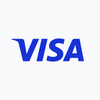It's easy to do when you're using the right tools!
Makeup brushes have become an almost inevitable tool for applying makeup to the face. But with so many brushes and other tools on the market, choosing the right product can sometimes seem daunting. We often reach for large sets because it looks like a good option, and then we need to know the purpose of half of what we bought.
That's why, like everything else in life, it's essential to get information and know which brushes are for what so that makeup looks and feels better. Yes, everything would be much easier if there was only one type of brush for a specific makeup product. Still, don't be mad at the variety of choices - especially regarding makeup brushes.

Today we're talking about makeup brushes for contouring because we know you often use a powder brush for contouring, which in theory, works. Still, you'll achieve much better results using brushes specifically designed for facial contouring.
You may be wondering what the advantages of using contouring brushes are, so here are some of the most important ones:
- Contouring brushes are usually comfortable and soft to the touch - one of the most essential elements of all brushes, contouring or not, is the feeling they leave on the skin. A good brush will leave a pleasant feeling in contact with the skin without any irritations, itching, etc., which is especially important for contouring. This is because contouring involves a lot of blending and passing the brush over the same spot, so the brush must be comfortable and soft for everyday use.
- Contouring brushes are most often made of synthetic fibers - contouring brushes are most often made of synthetic fibers because they allow for a better and more even application of the product because brushes made of synthetic fibers "absorb" the product less. In addition, using brushes with synthetic fibers reduces the possibility of uneven product application. It allows for more effortless blending and evening out of the product on the face.
- Contouring brushes usually have an ergonomic handle - the long ergonomic handle of contouring brushes has a dual function. To begin with, it is practical to hold and allows a firm and secure hold in hand. Likewise, they are long enough to enable a more precise application of color to certain parts of the face. For example, with blending brushes, the handle is slightly shorter so that the pressure on the skin can be better felt.
But what are the brushes used in the contour technique? There are several of them, and each has its specific function.
All types of contour brushes
As we mentioned earlier, there are several brushes for contouring the face. It should be emphasized here that in addition to choosing the "right" brushes, it is equally important to choose high-quality makeup so that the final result is precisely what it should be.
When it comes to contouring the face, these five brushes stand out the most: a soft, thin brush, a brush with a thicker and lined tip, a fan-shaped brush, a thicker brush with a slightly slanted tip and a brush with a sharply cut tip (reminder: you can find all these brushes in our online shop).

A soft, thin brush is often used to even out the foundation before applying a dark concealer. A smaller brush like this is valuable because it can apply concealer to the exact spots you want to conceal without covering your entire face with powder.
Brush with a thicker and lined tip is most often used for applying liquid powder. When using this brush, the recommended technique is to lightly tap on the face to make the effect look natural and not show traces of the brush being pulled on the face.
A fan brush is one of the general favorites because it feels like you're playing while applying makeup. In addition, this brush's airy and soft bristles are ideal for powdery textures. It is most often used for applying highlighter and emphasizing smaller parts after finishing contouring.
A thicker brush with a slightly slanted tip is designed explicitly for powdery textures and the application of loose powder. Since the brush has a long power, it will be easy to apply the required powder and remove excess product by blending so that the final result looks natural.
Brush with a sharp cut tip is used to emphasize parts of the face and complete the contouring process. It is considered an ideal tool if you want to outline smaller areas of the face precisely and can also apply blush.
Finally, what should you take into account when choosing contouring brushes?
After briefly reviewing the types of contouring brushes and looking at contouring as a technique, let's move on to the specifics: choosing the right brush.
One of the most important things to remember is which brushes are practical for realizing this technique. So, these are mainly those with rounded and angled bristles on the brush that do not absorb too much product but transfer all the applied product to your face. For contouring, do not use "flat" brushes because they cannot follow the face line so precisely, and thus apply the product well.

Remember, besides brushes, it is also essential to have the proper technique and use good products that match your natural skin color. It may sound too complicated to you now, but it isn't!
Maybe at first, it will all seem excessive and as if it doesn't work for you, but remember that every time contouring will look better and better because you will feel more comfortable with the brush in your hand while emphasizing all the parts of your face that you want and trying to achieve a look that will make you shine!










Comments (0)
There are no comments for this article. Be the first one to leave a message!